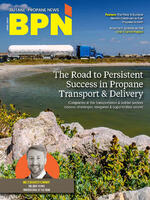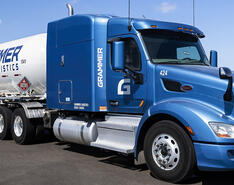
In the propane industry, where precision, safety and trust are fundamental, hiring is more than a transactional HR function. It’s a strategic investment. A single misstep, resulting in bad hires, can undermine not only productivity and team morale, but also safety, customer satisfaction and long-term profitability.
While most companies recognize the cost of a bad hire, the true impact is often underestimated. According to industry research, 95% of organizations admit to making at least one bad hire annually. In propane operations, where roles range from technically skilled drivers and technicians to administrative and sales professionals, these hiring missteps can quickly escalate into safety issues, compliance risks or reputational damage.
This article explores evidence-based practices for reducing bad hires — rooted in research, case studies and industry-specific insights — with practical takeaways for propane leaders looking to improve hiring outcomes.
Understanding the Real Cost of Bad Hires
A “bad hire” is typically someone who negatively impacts productivity, retention, performance and team culture. But the costs go well beyond payroll or replacement expenses. Hidden costs often include:
- Lost business and missed opportunities
- Decreased team performance and morale
- Increased risk exposure (e.g., safety violations, compliance issues)
- Lower customer satisfaction
- High turnover and recruitment costs
Organizations lacking a consistent and structured selection process are statistically five times more likely to make these costly errors. On the other hand, past studies have proved that strong onboarding and hiring systems can improve new hire retention by up to 82% and productivity by over 70% for actual businesses, not just the theoretical ones.
For propane businesses, the message is clear: Hiring practices must be intentional, structured and aligned with operational goals.
Best Practices for Optimizing Employee Fit
Drawing from experience in the propane sector, experts have identified several practices that significantly reduce hiring risk and improve workforce stability.
1. Conducting Culture & Leadership Assessments
Effective hiring practices start with understanding the leadership environment and company culture. By evaluating the behavioral traits, motivators, competencies and energy levels of current managers, organizations can better understand what success looks like inside their unique ecosystem.
This data-driven insight is particularly valuable for:
- Succession planning
- Team alignment and collaboration
- Hiring decisions for both field and office roles
- Preparing future leaders
For example, in a comparative study of five commercial driver-intensive businesses, those that implemented robust leadership and hiring diagnostics saw a 57% reduction in accidents and an 80% reduction in turnover within two years.
2. Standardizing the Interview Process
Many poor hires can be traced to unstructured interviews. Companies that invest in structured interview training for hiring managers typically experience:
- More consistent candidate evaluations
- Fewer legal risks due to compliance-focused questions
- Improved team collaboration in decision-making
- Better overall candidate experience
For propane roles like commercial driver’s licensed drivers, dispatchers and administrative staff, a standardized interview process ensures candidates are assessed fairly and accurately, based on job-relevant competencies.
3. Leveraging Behavioral & Cognitive Assessments
Modern assessments can reveal how a candidate is likely to think, act and engage in a specific role. Evaluations that measure behavioral traits, motivators and competencies have become increasingly popular for their predictive accuracy. However, not all assessments are created equal! Many “popular” hiring assessments lack all three key insights — usually, motivators and competencies. Key assessment dimensions include:
- Judgment and rule following (critical in safety-sensitive roles)
- Customer orientation and problem-solving
- Self-starting and accountability
- Cultural fit and adaptability
These tools help hiring managers move beyond résumés and gut instincts, offering an objective lens on candidate suitability and long-term potential. For driver-specific roles, for example, using the correct assessments can accurately predict the likelihood of accidents, making decisions easier when more than one candidate is in the mix for potential hiring. Having more information helps make better decisions.
4. Auditing the Candidate Experience
How applicants experience your hiring process can significantly influence who applies and accepts an offer. Studies show that a positive candidate experience can improve hire quality by up to 70%. Best-in-class organizations regularly audit their candidate journey — from job posting to onboarding — to identify and remove friction points such as:
- Lack of timely communication
- Ambiguous expectations
- Inconsistent messaging about company values and goals
Improving these elements not only boosts the applicant pool but also reduces ghosting, a growing issue in many sectors, including propane.
Linking Talent Strategy to Business Goals
Too often, hiring is handled in a vacuum, disconnected from larger business objectives. Hiring should reflect broader goals such as expansion, innovation or safety performance. For instance:
- A company expanding into new geographic markets might prioritize hiring leaders with experience scaling teams or entering new territories.
- If the priority is improving customer service, candidates with strong empathy and problem-solving capabilities should be front-runners.
- When safety is paramount, technical expertise and rule-following behavior take center stage.
Organizations that align hiring criteria with strategic goals consistently outperform their peers on key metrics like growth, productivity and customer satisfaction.
Building a Strong Employer Brand
Today’s candidates are evaluating you as much as you’re evaluating them. Employer branding — the impression your organization gives job seekers — can be a competitive advantage. Effective employer branding includes:
- Clear and compelling job descriptions
- Transparent hiring processes
- Thoughtful onboarding plans
Communication that reflects the organization’s values Companies that invest in employer branding are up to three times more likely to hire top performers and reduce time-to-fill.
The Importance of Onboarding
Even a great hire can underperform without proper onboarding. Successful onboarding programs go beyond paperwork and orientation — they focus on early engagement, expectations and cultural integration.
A 30-60-90-day onboarding plan should include:
- Short-term performance goals
- Job-specific training
- Mentor or peer support
- Regular check-ins with supervisors
Organizations with effective onboarding processes report significantly higher new hire retention, engagement and productivity.
Why It Matters for the Propane Industry
Propane companies cannot afford to make hiring mistakes with an aging workforce, growing safety demands and a competitive labor market. Operational, financial and reputational risks are simply too high.
Yet the good news is that hiring mistakes are preventable. Companies can dramatically improve their hiring results with the right tools, structure and strategic alignment. From commercial drivers to administrative professionals and emerging leaders, the path to success starts with better hiring — and better hiring starts with intentional, research-informed practices.


